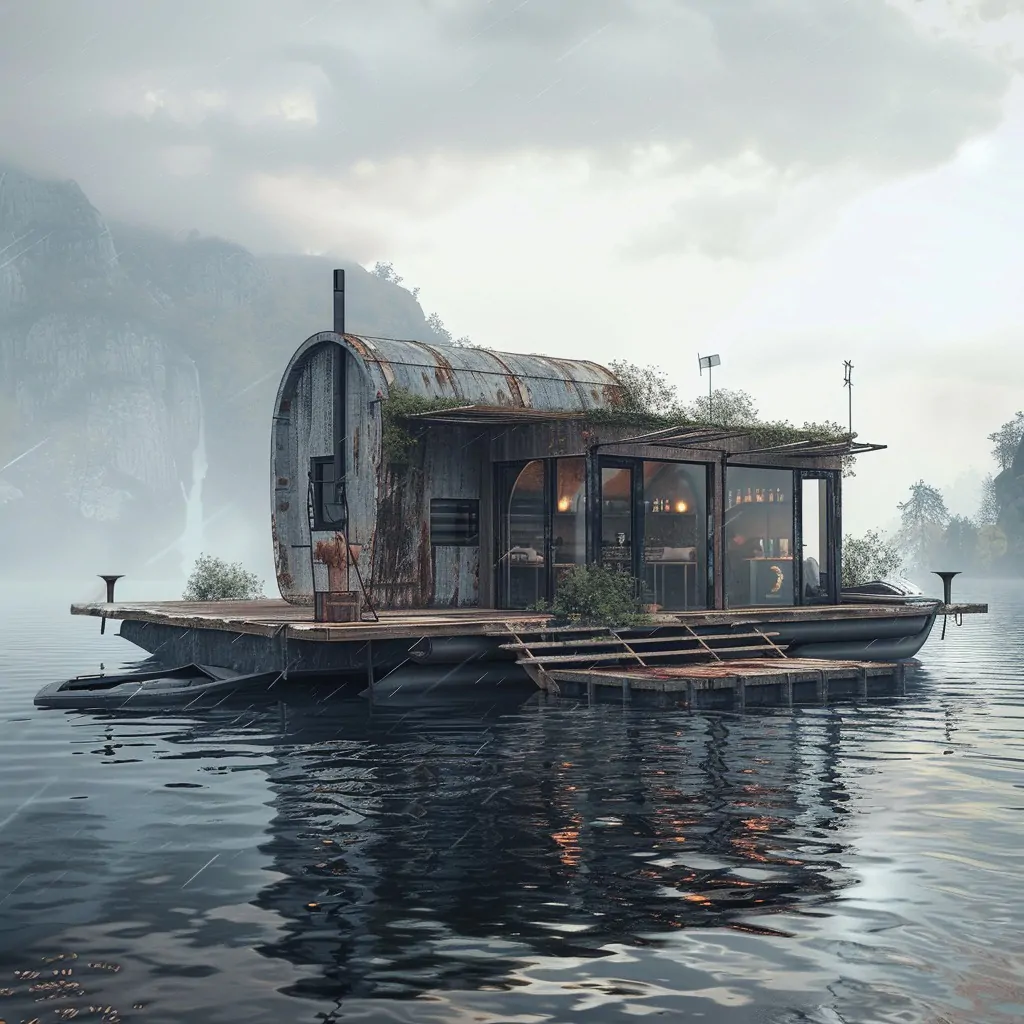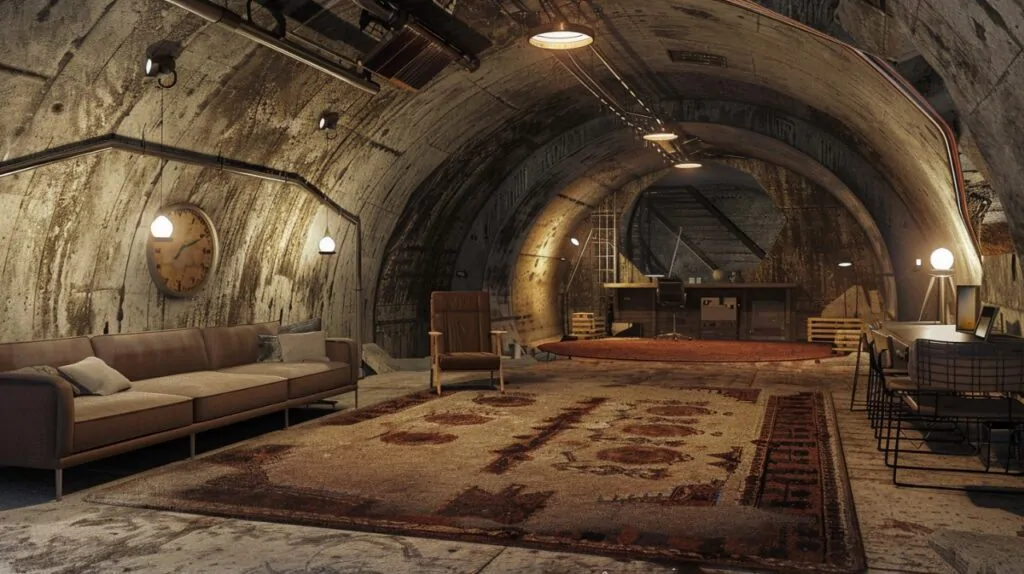
Rooms for the End of the World: Designing for Collapse, Not Comfort
Let’s imagine the world is ending — not the dramatic, meteor-screaming-down kind of ending. But something slower. Like a faucet that keeps dripping long after the pipes have burst. The temperature has shifted two degrees too far. Your groceries have doubled in price and halved in nutrition. The street lights flicker a little longer before waking up. There’s always a new war, a new drought, a new app update. And still — the dishes need doing
What kind of architecture suits that reality? What kind of room should you be in when the sky falls with a shrug?
Maybe it’s time we stopped designing for perfection and started designing for persistence. Not comfort — continuity. Not luxury — longevity. Not escape — entanglement.
Let’s begin underground.
Bunkers, yes. But not the tin-can Cold War type. The new wave is calmer, cozier, curated. A bunker by Oppidum includes wine cellars, spas, galleries, panic rooms with color therapy, and HVACs with apocalypse-proof filters. You could survive nuclear fallout and still do yoga under a Himalayan salt chandelier. But that’s for the billionaires. Let’s turn our heads elsewhere.
Let’s talk earthbags. Yes, sacks of dirt. Dirt is humble, thermal, locally available. Earthbag homes — like those designed by architect Nader Khalili — can be built by almost anyone with hands and time. They’re rounded, womb-like, and earthquake-resistant. A little Hobbiton, a little Mad Max. A good choice if you plan to ride out collapse with a garden and some goats.

Or maybe you’d rather float. Oceanix Busan is a real-life floating city prototype being built in South Korea, powered by renewables and designed to adapt to rising tides. But there are smaller, more poetic versions too — like artist Mary Mattingly’s “Waterpod Project,” a self-sustaining habitat that bobbed down the Hudson River with chickens, rainwater collection, and an herb garden. It was like The Life Aquatic, but with more solar panels.
Or maybe it’s not water you fear, but fire. Enter fireproof houses made of hempcrete, rammed earth, or even mycelium — yes, mushroom-based materials. Strong, regenerative, flame-retardant. Like if Studio Ghibli started making survival gear.
Let’s not forget shipping container homes. Once hipster symbols, now practical tools. Easily transported, structurally sound, and stackable like hope in a tight space. Some NGOs are converting them into mobile clinics, classrooms, even tiny vertical farms. In the right hands, they become little ark-boxes for the end of days.
But architecture for collapse isn’t just about walls and roofs. It’s about systems.
The off-grid movement is no longer fringe — it’s foresight. Solar panels. Compost toilets. Rocket stoves. Rainwater harvesting. Greywater recycling. Homes with more independence than their owners.
If this sounds grim, you’re not alone. But here’s the twist: the more we design for endings, the more we discover beginnings.
There’s a rising aesthetic — call it “Collapse-core. ” A little brutalist, a little folk, all survival. Think soot-smeared renderings, warm concrete, foldable furniture, algae walls. Interiors that admit they may have to become exteriors at any moment.
In Japan, post-disaster housing units are designed to be erected within 3 days of a catastrophe. In Chile, Alejandro Aravena’s incremental housing projects let residents expand their homes as they’re able — a concept that works well when economies collapse in slow motion. In Iran, mosques are often designed as emergency shelters — spiritual infrastructure doubling as civic safety net.

Cinema gets it.
Children of Men taught us how to move through a world unraveling at the edges.
The Road showed us the loneliness of too much functionality.
High-Rise collapsed the utopia of vertical luxury.
Snowpiercer made architecture a train — class, movement, survival, and revolt on a single rail.
But there are softer visions too. In WALL-E, the last plant is cradled in a shoe. In Station Eleven, the Traveling Symphony plays Shakespeare for post-apocalyptic settlements. Beauty matters — even when nothing else works.
So maybe the rooms we need at the end of the world aren’t bunkers. Maybe they’re studios. Libraries. Kitchens. Places for repair. Places for remembering. Places that still hum with meaning even after the Wi-Fi dies.
Design for collapse isn’t giving up. It’s giving in — to nature, to cycles, to chaos with rhythm.
What if the most radical architecture now is one that breathes, breaks, mends, and waits?
What if we designed windows for watching storms instead of surviving them?
What if the last room on Earth had a skylight?
Because in the end, maybe architecture doesn’t need to save us.
Maybe it just needs to say:
I saw what was coming — and still, I tried to make it beautiful.



